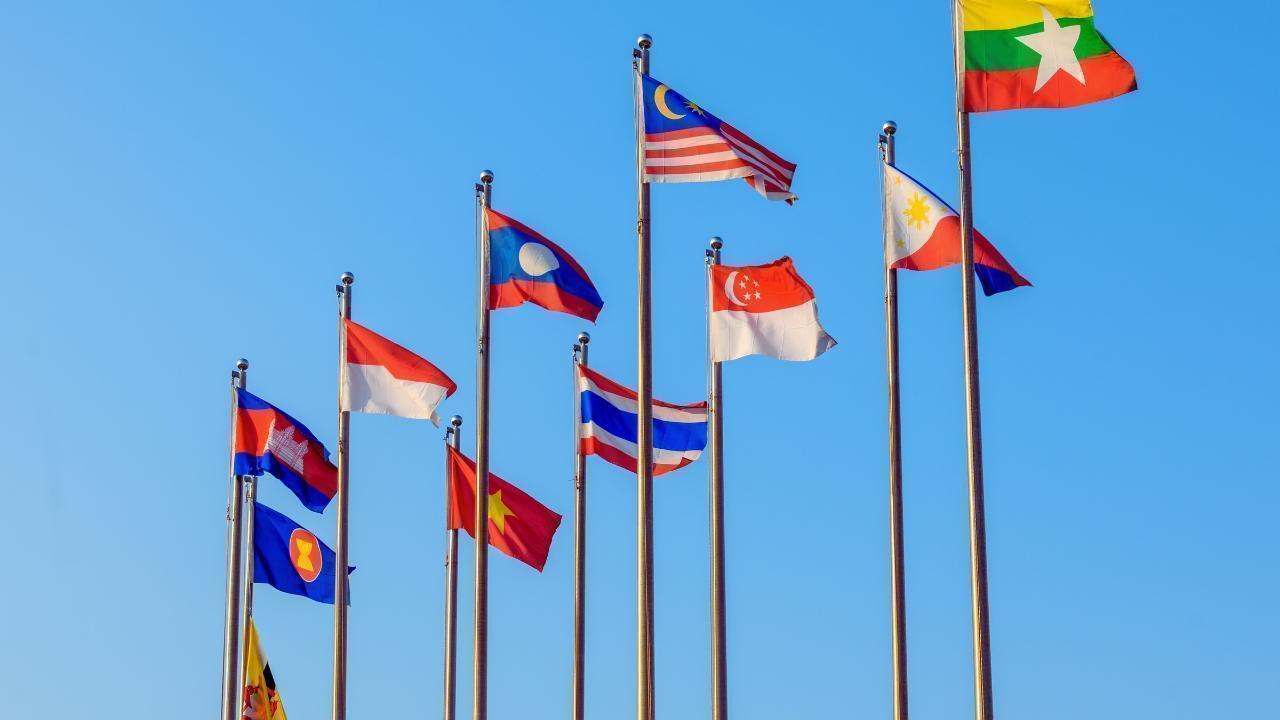
Join 10k+ people to get notified about new posts, news and tips.
Do not worry we don't spam!

Post by : Anis Farhan
In June 2025, ASEAN member states gathered in Jakarta for a special summit dedicated exclusively to regional climate strategy. Branded as the “ASEAN Climate Cohesion Framework 2040,” the event marked the bloc’s most unified public stance on environmental cooperation to date. Ministers pledged to strengthen cross-border green finance, accelerate renewable energy integration, and formalize a regional carbon credit market.
The declarations were sweeping, the tone urgent. Yet behind the closed doors and high-level communiqués, the reality remains more fragmented. While some member states like Singapore and Vietnam have embraced the transition to net zero, others—such as Indonesia, Thailand, and Myanmar—face domestic constraints that slow progress.
As climate volatility escalates across Southeast Asia—bringing with it typhoons, droughts, haze events, and rising sea levels—ASEAN’s need for a unified response grows. But questions linger: Are these climate pledges truly actionable? Or is ASEAN’s latest move another case of diplomatic performance over structural reform?
The newly announced ASEAN Climate Cohesion Framework (ACCF) outlines several key ambitions:
Achieving a 30% renewable energy share in regional power capacity by 2035
Establishing an ASEAN Green Bond Label to standardize sustainable investment instruments
Operationalizing a regional carbon credit marketplace by 2027
Creating a climate risk-sharing facility to support vulnerable member states during natural disasters
Joint investment in transboundary energy grids to distribute solar and hydroelectric power more efficiently
Officials have described the framework as a “realignment of priorities” and a “leap from intent to infrastructure.” The ASEAN Secretariat has been tasked with setting up a climate data observatory to track member progress and maintain policy transparency.
But regional analysts remain skeptical. Much of the framework is non-binding, and progress depends on voluntary compliance and resource availability—factors that have historically undermined regional agreements.
The greatest challenge to unified climate action lies in ASEAN’s diversity. Economic priorities, governance structures, and energy mixes vary widely among its 10 member states.
Singapore has pledged to reach net-zero emissions by 2050 and is aggressively pursuing green hydrogen and carbon trading initiatives. Vietnam has become a surprise leader in solar energy deployment, attracting major FDI inflows from Europe and South Korea.
But Indonesia and Thailand, the region’s two largest fossil fuel consumers, remain heavily reliant on coal and natural gas. Indonesia, while committing to phase out coal by 2060, continues to approve new coal plants under legacy contracts. Thailand’s Power Development Plan still allocates over 50% of capacity to fossil fuels for the next decade.
Meanwhile, Laos, Cambodia, and Myanmar lack the financial and technical resources to implement scalable green initiatives, despite being some of the most climate-vulnerable countries in the region.
This gap in national capabilities creates a major obstacle for regional coherence. Without financial transfers or a binding enforcement mechanism, wealthier members can surge ahead while others fall behind.
One of the most concrete outcomes of the ACCF summit was the creation of an ASEAN Sustainable Finance Council, which will coordinate policies on ESG investment, carbon pricing, and public-private partnerships.
Green finance is critical. According to the Asian Development Bank, ASEAN needs up to $210 billion annually through 2030 to meet its climate targets. Current financing levels are less than a third of that figure.
Private sector engagement has increased. Temasek Holdings (Singapore), CIMB Group (Malaysia), and Bank Mandiri (Indonesia) are leading regional sustainability bond issuances. Meanwhile, regional stock exchanges—including Bursa Malaysia and the Singapore Exchange—have begun mandating climate risk disclosures for listed companies.
Still, capital markets alone may not bridge the gap. Smaller ASEAN members need concessional financing, climate insurance tools, and technical aid—all of which depend on stronger regional pooling mechanisms, which are still in their infancy.
Environmental issues in ASEAN often cross borders, complicating resolution efforts. The transboundary haze—largely caused by land clearing in Indonesia—continues to affect Singapore, Malaysia, and parts of Thailand annually. Despite repeated diplomatic engagements, enforcement remains weak.
In the Mekong subregion, dam construction—primarily in Laos and China—has altered water flows and disrupted ecosystems across Cambodia, Vietnam, and Thailand. The Mekong River Commission, a separate entity, lacks legal power to regulate upstream behavior, underscoring the limits of ASEAN’s soft power diplomacy in hard environmental matters.
ASEAN’s new framework attempts to address some of these disputes through joint data-sharing and regional arbitration mechanisms. But without enforcement authority, these remain consultative at best.
Younger populations across ASEAN—particularly in Malaysia, Thailand, and Indonesia—are increasingly vocal about environmental degradation and climate justice. Regional polls in early 2025 show that over 70% of Southeast Asians under age 30 consider climate change a top political issue.
This growing public demand for action is placing pressure on regional leaders to move beyond paper commitments. It also creates space for new diplomacy: climate action as a soft power tool. ASEAN, long criticized for being reactive and consensus-bound, has an opportunity to lead global south dialogues on equitable climate finance and loss-and-damage mechanisms.
Observers believe that if ASEAN’s climate framework succeeds in mobilizing even partial compliance and cross-border cooperation, it could become a model for other multilateral blocs navigating similar economic and political asymmetries.
ASEAN’s Climate Cohesion Framework represents a bold shift in tone, but whether it marks a shift in practice is yet to be seen. Without binding timelines, enforceable targets, or significant financing commitments, the framework risks becoming another diplomatic gesture in a region increasingly vulnerable to climate extremes.
For now, ASEAN has chosen unity over urgency. That may preserve harmony in the short term, but climate science demands more. The next two years will be a test—not just of ASEAN’s institutional resolve, but of its political will to act where it matters most.
This article is for editorial and informational use only. It does not represent official environmental policy or legal guidance. All information is accurate as of July 2025 and subject to change with evolving regional developments.










India Wins First Women’s World Cup 2025 Title
India lifts its maiden Women’s World Cup 2025 title! Harmanpreet Kaur’s team stuns South Africa in a

Manuel Frederick, 1972 Olympic Bronze Goalkeeper, Dies at 78
Manuel Frederick, a member of India’s 1972 Olympic bronze hockey team, has died in Bengaluru at 78 a

Muhammad Hamza Raja Wins IFBB Pro Card Puts Pakistan & UAE on Global Stage
Pakistani bodybuilder Muhammad Hamza Raja earns IFBB Pro Card in Czech Republic, showcasing Dubai’s

Shreyas Iyer’s Recovery Underway After Spleen Laceration in Sydney ODI
Shreyas Iyer is recovering after a spleen laceration sustained while taking a catch in the Sydney OD

Qatar Ready to Host FIFA U-17 World Cup 2025 in Aspire
Qatar confirms full readiness to host the FIFA U-17 World Cup 2025 from November 3–27, with world-cl

Wolvaardt’s 169 Sends South Africa Into Women’s World Cup Final
Laura Wolvaardt’s 169 powered South Africa to a 125-run semi-final win over England, booking a place